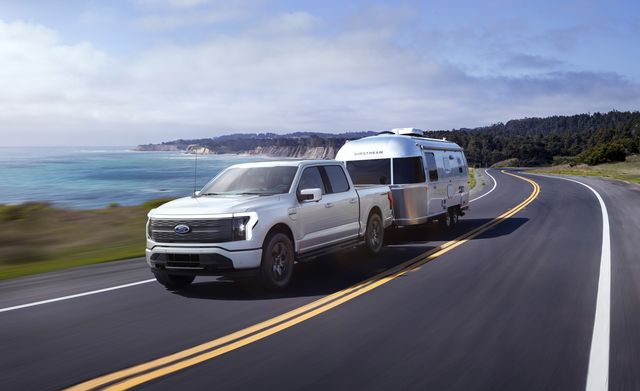Schematic images of the Tesla Cybertruck’s powertrain have been discovered by well-known Tesla reporter greentheonly via X. These schematics are causing quite a stir in the automotive and tech communities, as they reveal something that deviates from Tesla’s initial announcements.
When Tesla first unveiled this highly-anticipated electric truck, they announced three distinct variants: a Single Motor Rear-Wheel Drive (RWD), a Dual Motor All-Wheel Drive (AWD), and a Tri-Motor AWD. The base variant was initially planned to feature a rear-wheel-drive setup, aligning with traditional truck designs that are optimized for heavy-duty tasks.

Table of Contents
Tesla Cybertruck Schematics Hint at FWD Base Variant
The newly discovered schematics suggest that the base model may actually come with a front-wheel-drive system, raising questions and concerns about the vehicle’s performance capabilities.
Tesla Cybertruck Original Plans
When Tesla first pulled the curtain back on the Cybertruck, they introduced three distinct variants aimed at catering to a broad range of needs and preferences. These were:
- Single Motor Rear-Wheel Drive (RWD): Targeted at those who require basic utility and performance.
- Dual Motor All-Wheel Drive (AWD): Designed for those seeking a balance between performance and functionality.
- Tri-Motor All-Wheel Drive (AWD): Aimed at consumers looking for top-tier performance, comparable to luxury sports cars.
The single-motor RWD variant was particularly noteworthy because it was planned as a rear-wheel-drive setup. In the world of trucks, rear-wheel drive is often considered the go-to configuration for heavy-duty tasks such as towing and hauling. The rear-wheel-drive system provides better traction and weight distribution when carrying heavy loads, making it a staple in traditional truck design.
The choice to initially offer a rear-wheel-drive base variant seemed to be Tesla’s nod to traditional truck utility, ensuring that even the most basic version of the Cybertruck would be capable of handling the kinds of tasks that truck owners frequently undertake.
Given this context, the recent discovery of schematic images suggesting a front-wheel-drive system for the base model raises significant questions. It diverges from Tesla’s initial plans and could potentially impact the Cybertruck’s utility and performance in ways that are yet to be fully understood.
Tesla Cybertruck Schematics
In a surprising twist, recently discovered schematic images of the Cybertruck’s powertrain have added a layer of complexity to Tesla’s initial plans. These schematics reveal a single motor located at the front of the vehicle, suggesting that the base variant of the Cybertruck may feature an FWD system.
Model S and X are getting the RGB ambient/interior lighting
Also, the Xray goggles, they are real ;) pic.twitter.com/sa32zrvGHv
— green (@greentheonly) October 26, 2023
Front-wheel drive systems are more commonly found in passenger cars and are generally not the first choice for trucks designed for heavy-duty tasks like towing and off-roading. The weight distribution in trucks is crucial for these tasks, and a front-wheel-drive system could potentially compromise the Cybertruck’s utility capabilities.
This revelation from the schematic images has left both potential buyers and Tesla enthusiasts with more questions than answers, as it challenges the initial promises made by Tesla regarding the Cybertruck’s performance and utility.
Advantages and Disadvantages of Front-Wheel Drive
The possibility of a front-wheel-drive system in the base variant of the Cybertruck could have several implications for the vehicle’s performance, particularly when it comes to towing, off-roading, and other heavy-duty tasks.
Towing Capabilities
In a rear-wheel-drive system, the vehicle’s weight is more evenly distributed, providing better traction and stability, especially when towing heavy loads. A FWD system, on the other hand, could compromise the Cybertruck’s towing capabilities. The front wheels might struggle to maintain grip when pulling a heavy load, leading to reduced stability and control.

Off-Roading Performance
RWD is generally preferred for off-roading because it offers better balance and weight distribution, allowing for more effective power delivery to the wheels. FWD systems are not typically designed for heavy-duty off-road use and could limit the Cybertruck’s ability to navigate challenging terrains effectively.
For tasks like hauling heavy equipment in the bed, RWD systems are generally more effective due to their better weight distribution. A FWD system could result in the front wheels bearing too much weight, affecting both stability and tire wear over time.
Overall Performance
While FWD systems have their advantages, such as improved fuel efficiency and lower manufacturing costs, they are generally not the first choice for trucks designed for heavy-duty tasks. The potential shift from RWD to FWD in the Cybertruck’s base variant could be a concern for those looking for a multi-functional, high-performance electric truck.
What Does This Mean for Tesla?
Tesla enthusiasts and potential buyers who were eagerly awaiting a rear-wheel-drive base variant may now have reservations. The shift to a front-wheel-drive system could be seen as a deviation from Tesla’s initial promise of delivering a truck that can handle heavy-duty tasks with ease. This could lead to skepticism about the vehicle’s capabilities and might even affect pre-orders or future sales.
Questions About Other Variants
If the base variant is undergoing such a significant change, what does this mean for the other, more advanced variants like the Dual Motor and Tri-Motor setups? Will they also see changes in their powertrain configurations? These unanswered questions add an element of uncertainty that could impact consumer trust.
Tesla has built its brand on innovation and the promise of high-performance, sustainable vehicles. Any perceived compromise on these fronts, especially for a vehicle as highly anticipated as the Cybertruck, could have broader implications for the brand’s reputation.
The Need for Clarification
Given the buzz this revelation has generated, it’s crucial for Tesla to address these concerns promptly. Transparency about any changes and the reasons behind them will be key to maintaining consumer trust and enthusiasm for the Cybertruck.
Conclusion
The discovery of schematic images suggesting a front-wheel-drive system for the Tesla Cybertruck’s base variant has added an unexpected twist to an already compelling narrative. What was initially presented as a groundbreaking electric truck with variants designed to suit a range of needs has now been thrown into a cloud of uncertainty. This revelation raises questions about the Cybertruck’s performance capabilities and diverges from Tesla’s initial promises, leaving potential buyers and enthusiasts with more questions than answers.
As the anticipation for the Cybertruck’s official release continues to build, the need for Tesla to address these concerns becomes increasingly urgent. Transparency is key; the company must clarify whether the schematics reflect a change in direction and, if so, provide a detailed explanation. This will be crucial in maintaining consumer trust and ensuring that Cybertruck lives up to the high expectations that have been set for it.


















